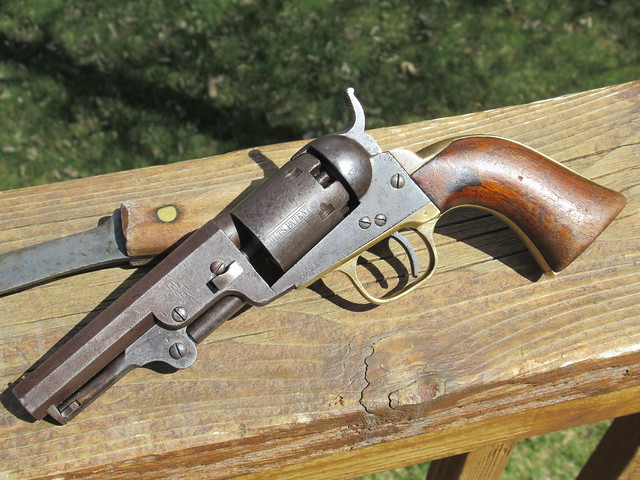- Joined
- Jan 30, 2021
- Messages
- 1,045
- Reaction score
- 1,118
I have just acquired (from the estate of a deceased collector) approximately two dozen (I have not actually counted nor inventoried them all yet) original black powder percussion revolvers, primarily Colt and at least one Remington New Model Army. They all exhibit various levels and depths of rust, and some of the actions function while others are completely locked up due to the corrosion. I intend to clean up as many as I can and 'restore' them to the point I could safely fire them (which I intend to do eventually... given their current condition, I figure it cannot hurt them anymore)
I first plan to completely disassemble and strip each revolver as much as possible and then use WD-40 and fine steel wool to remove as much surface rust as possible, then hopefully free stuck cones after a good soak in Kroil (and maybe apply heat?), and treat all the wood grips with Linseed oil. Does anyone have any further suggestions, tips, recommendations and/or constructive criticism on my cleaning regimen?
Additionally, I realize none of these revolvers have been in production for more than a century and a half... so what would be the best source for any replacement parts (particularly in their actions)? Would, by chance, corresponding parts from modern replicas (e.g. Pietta, Uberti) fit in these authentic antique revolvers?
As an example of the state of these, here is a Remington New Model Army with its corroded frame and barrel, to give you an idea...




I first plan to completely disassemble and strip each revolver as much as possible and then use WD-40 and fine steel wool to remove as much surface rust as possible, then hopefully free stuck cones after a good soak in Kroil (and maybe apply heat?), and treat all the wood grips with Linseed oil. Does anyone have any further suggestions, tips, recommendations and/or constructive criticism on my cleaning regimen?
Additionally, I realize none of these revolvers have been in production for more than a century and a half... so what would be the best source for any replacement parts (particularly in their actions)? Would, by chance, corresponding parts from modern replicas (e.g. Pietta, Uberti) fit in these authentic antique revolvers?
As an example of the state of these, here is a Remington New Model Army with its corroded frame and barrel, to give you an idea...



















































 IMG_0732
IMG_0732 That ought to keep you busy for a while!
That ought to keep you busy for a while!